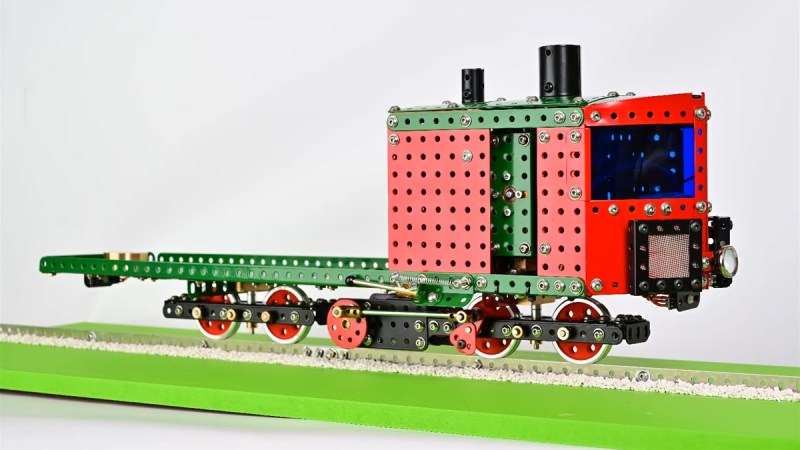Stolen iPhones disabled by Apple's anti-theft tech after Los Angeles looting
What just happened? As protests against federal immigration enforcement swept through downtown Los Angeles last week, a wave of looting left several major retailers, including Apple, T-Mobile, and Adidas, counting the cost of smashed windows and stolen goods. Yet for those who made off with iPhones from Apple's flagship store, the thrill of the heist quickly turned into a lesson in high-tech security.
Apple's retail locations are equipped with advanced anti-theft technology that renders display devices useless once they leave the premises. The moment a demonstration iPhone is taken beyond the store's Wi-Fi network, it is instantly disabled by proximity software and a remote "kill switch."
Instead of a functioning smartphone, thieves were met with a stark message on the screen: "Please return to Apple Tower Theatre. This device has been disabled and is being tracked. Local authorities will be alerted." The phone simultaneously sounds an alarm and flashes the warning, ensuring it cannot be resold or activated elsewhere.
This system is not new. During the nationwide unrest of 2020, similar scenes played out as looters discovered that Apple's security measures turned their stolen goods into little more than expensive paperweights.
The technology relies on a combination of location tracking and network monitoring. As soon as a device is separated from the store's secure environment, it is remotely locked, its location is tracked, and law enforcement is notified.
// Related Stories
Videos circulating online show stolen iPhones blaring alarms and displaying tracking messages, making them impossible to ignore and virtually worthless on the black market.
According to the Los Angeles Police Department, at least three individuals were arrested in connection with the Apple Store burglary, including one suspect apprehended at the scene and two others detained for looting.
The crackdown on looting comes amid a broader shift in California's approach to retail crime. In response to public outcry over rising thefts, state and local officials have moved away from previously lenient policies. The passage of Proposition 36 has empowered prosecutors to file felony charges against repeat offenders, regardless of the value of stolen goods, and to impose harsher penalties for organized group theft.
Under these new measures, those caught looting face the prospect of significant prison time, a marked departure from the misdemeanor charges that were common under earlier laws.
District attorneys in Southern California have called for even harsher penalties, particularly for crimes committed during states of emergency. Proposals include making looting a felony offense, increasing prison sentences, and ensuring that suspects are not released without judicial review. The goal, officials say, is to deter opportunistic criminals who exploit moments of crisis, whether during protests or natural disasters.
#stolen #iphones #disabled #apple039s #antitheftStolen iPhones disabled by Apple's anti-theft tech after Los Angeles looting
What just happened? As protests against federal immigration enforcement swept through downtown Los Angeles last week, a wave of looting left several major retailers, including Apple, T-Mobile, and Adidas, counting the cost of smashed windows and stolen goods. Yet for those who made off with iPhones from Apple's flagship store, the thrill of the heist quickly turned into a lesson in high-tech security.
Apple's retail locations are equipped with advanced anti-theft technology that renders display devices useless once they leave the premises. The moment a demonstration iPhone is taken beyond the store's Wi-Fi network, it is instantly disabled by proximity software and a remote "kill switch."
Instead of a functioning smartphone, thieves were met with a stark message on the screen: "Please return to Apple Tower Theatre. This device has been disabled and is being tracked. Local authorities will be alerted." The phone simultaneously sounds an alarm and flashes the warning, ensuring it cannot be resold or activated elsewhere.
This system is not new. During the nationwide unrest of 2020, similar scenes played out as looters discovered that Apple's security measures turned their stolen goods into little more than expensive paperweights.
The technology relies on a combination of location tracking and network monitoring. As soon as a device is separated from the store's secure environment, it is remotely locked, its location is tracked, and law enforcement is notified.
// Related Stories
Videos circulating online show stolen iPhones blaring alarms and displaying tracking messages, making them impossible to ignore and virtually worthless on the black market.
According to the Los Angeles Police Department, at least three individuals were arrested in connection with the Apple Store burglary, including one suspect apprehended at the scene and two others detained for looting.
The crackdown on looting comes amid a broader shift in California's approach to retail crime. In response to public outcry over rising thefts, state and local officials have moved away from previously lenient policies. The passage of Proposition 36 has empowered prosecutors to file felony charges against repeat offenders, regardless of the value of stolen goods, and to impose harsher penalties for organized group theft.
Under these new measures, those caught looting face the prospect of significant prison time, a marked departure from the misdemeanor charges that were common under earlier laws.
District attorneys in Southern California have called for even harsher penalties, particularly for crimes committed during states of emergency. Proposals include making looting a felony offense, increasing prison sentences, and ensuring that suspects are not released without judicial review. The goal, officials say, is to deter opportunistic criminals who exploit moments of crisis, whether during protests or natural disasters.
#stolen #iphones #disabled #apple039s #antitheft














